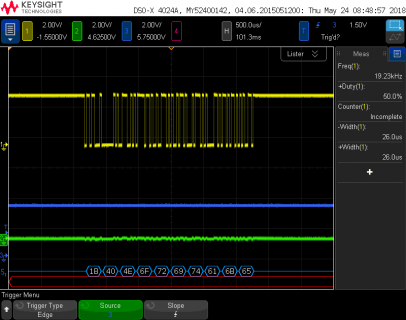Hello to everybody,
I just got my first Teensy 3.2 board and I'm loving it so far.
I have some experience with Arduino and I'm trying to port a project to the Teensy especially for it's extra memory.
I'm driving a VFD display from Noritake and I'm using their library which contains a small asm part…
When I try to compile it for the Teensy it get this error:
impossible constraint in 'asm'
The complete function:
The complete library can be found here:
https://www.noritake-elec.com/specification.php?id=Arduino_Noritake_VFD_CUY&category=10&type=cuy
Many thanks for eventual help!
I just got my first Teensy 3.2 board and I'm loving it so far.
I have some experience with Arduino and I'm trying to port a project to the Teensy especially for it's extra memory.
I'm driving a VFD display from Noritake and I'm using their library which contains a small asm part…
When I try to compile it for the Teensy it get this error:
impossible constraint in 'asm'
The complete function:
Code:
static inline void tunedDelay(uint16_t delay){
uint8_t tmp=0;
asm volatile("sbiw %0, 0x01 \n\t"
"ldi %1, 0xFF \n\t"
"cpi %A0, 0xFF \n\t"
"cpc %B0, %1 \n\t"
"brne .-10 \n\t"
: "+r" (delay), "+a" (tmp)
: "0" (delay)
);
}The complete library can be found here:
https://www.noritake-elec.com/specification.php?id=Arduino_Noritake_VFD_CUY&category=10&type=cuy
Many thanks for eventual help!



